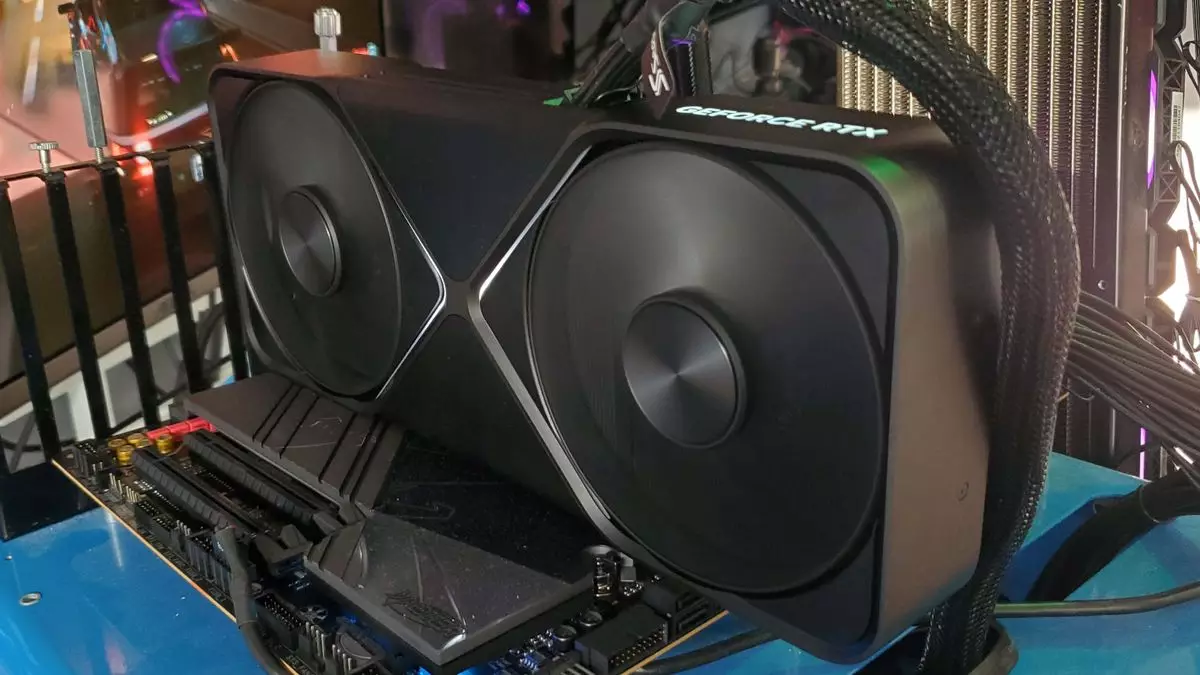The launch of Nvidia’s RTX 50-series GPUs has not been without its share of challenges. From high prices driven by low availability to performance discrepancies stemming from what Nvidia describes as “production anomalies,” the introduction of this new line has stirred both excitement and concern among gaming enthusiasts and tech reviewers. The potential issue of “missing ROPs,” or Render Output Pipelines, has raised alarms that seem unwarranted, at least according to some industry experts. As we take a closer look at these concerns, it becomes clear that discernment is crucial for consumers looking to navigate this tumultuous landscape.
To fully appreciate the significance of the reported “missing ROPs,” it is essential to understand what ROPs actually are. ROPs play a critical role in the graphics rendering process, being responsible for the final steps of pixel generation before they are displayed onscreen. Consequently, a decrease in ROPs can lead to a drop in graphical performance, something that gamers invest heavily in when purchasing a higher-end graphics card. Users who have noticed discrepancies in the number of ROPs on their newly acquired RTX 50-series GPUs may understandably feel deceived or frustrated.
The issue involves certain models exhibiting eight fewer ROPs than advertised, which can have a measurable impact on performance metrics. The situation is aggravated by the fact that these GPUs, already in limited supply, are often subject to inflated prices due to market demand, making any performance shortfall even more troubling for consumers. The complexity of the matter deepens when we consider the tension between product availability and reliability.
In response to these alarming reports, Wallace Santos, CEO of Maingear Computers, took to LinkedIn to reassure customers about the rarity of these defects. Maingear’s testing protocols reportedly detected zero cards with missing ROPs in the several hundred builds they checked. This reinforces Nvidia’s statement that only 0.5% of the RTX 50-series cards have been affected by this anomaly.
The idea that only a small fraction of the GPUs are influenced by this issue is certainly a relief. However, the damages are not merely quantitative but qualitative. How damaging is it to a brand’s reputation if even a small percentage of products develop problems? Given the competitive nature of the GPU market and the greater scrutiny that comes with high-profile products, it raises valid concerns about quality assurance and consumer trust.
While it is comforting to know that this issue might be limited to a small production run, the ramifications for Nvidia go beyond numbers. The undercurrent of dissatisfaction that arises from users experiencing any form of flaw is exacerbated by the already heightened anticipation surrounding new technology. By failing to deliver on promises, Nvidia risks losing consumer trust, which could have long-lasting repercussions for its future product launches.
Furthermore, issues like the infamous black screen—separate from but equally troubling—underscore an urgent need for ongoing, transparent communication between manufacturers, retailers, and consumers. Upcoming driver updates aim to remedy the black screen problem, but the general sentiment remains: consumers are weary and frustrated by an inconsistent experience.
For those eager to get their hands on the RTX 50-series, it is essential to do thorough checks, leveraging tools like GPU-Z to confirm specifications. While the news from Maingear and Nvidia brings a modicum of relief regarding missing ROPs, vigilance and consumer education remain paramount.
Ultimately, as the dust settles on these issues, consumers should prioritize staying updated on product specifications, firmware updates, and peer insights to mitigate their concerns. In a rapidly evolving technology landscape, it is potentially disastrous for brands to overlook the integral relationship they have with their customer base. Any brand—be it Nvidia or another—must approach such challenges with integrity and transparency to foster trust and long-term loyalty among their users.

